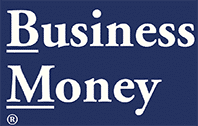Types of fix and flip loans for new investors
 If you’re currently a new investor and thinking about getting into fix and flip, loans can be a big part of this process. It’s good to know that there are a lot of options for financing your fix and flip projects.
If you’re currently a new investor and thinking about getting into fix and flip, loans can be a big part of this process. It’s good to know that there are a lot of options for financing your fix and flip projects.
These loans will come from banks, private lenders, hard money lenders, and more. But it’s important to understand the difference between these loan types if you want to really get down to the nitty-gritty of arranging fix and flip financing in your own deals with ease.
Hard money loans
Hard money loans are one of the most popular ways to finance a fix and flip. These loans are short-term, usually 4-6 months, but they have higher interest rates and larger down payments than traditional bank financing. They typically charge interest rates between 10% and 20%, which is significantly higher than you would pay with similar terms from a bank or credit union.
Hard money loans require no credit checks, so you can get approved even if you have poor credit or no credit history at all. In some cases, borrowers don’t even need to provide a personal guarantee on the loan. This makes it easier for people with poor credit scores or no credit history at all to get approved for a fix and flip loan than with other types of financing options such as traditional bank loans.
Cash-out refinancing
Cash-out refinancing is when you take out a loan against the equity in your existing home so you can buy another property. With this type of loan, you typically have a shorter repayment term and lower interest rate than other financing options because you’re borrowing against your home’s value rather than creditworthiness or income. This makes it easier to qualify for a larger loan amount at a lower cost than traditional financing options like FHA loans or USDA loans.
Home equity lines of credit (HELOCs)
If you have equity in your home, this can be a good option for funding a flip. A HELOC is an unsecured line of credit that allows you to borrow against the equity in your home. The interest rate on a HELOC is typically lower than other types of loans because there’s no collateral backing up the loan. However, if you can’t pay back the loan when it comes due — or don’t pay it back at all — your lender will foreclose on your home and sell it to recoup what they’re owed.
Investment property lines of credit (LOCs)
Investment property lines of credit (LOCs) are a type of fix and flip loan that can be used to purchase a house, fix it up and sell it for a profit.
The interest rate on an investment property line of credit is usually lower than other types of loans. That’s because banks recognize that you’re probably going to need money for more than just the purchase price; they know you’ll need cash to fix up the place before putting it on the market.
These types of loans typically have lower down payments and better terms than traditional mortgages. They also allow you to use the equity from your existing home or another source as collateral in case things don’t go well with your new project.
Bridge loans
A bridge loan is a short-term loan that allows an investor to buy a property that’s not yet ready for sale. The borrower uses the proceeds from the bridge loan to complete work on the property and then refinances with a conventional mortgage once it’s ready for listing.
 The major benefit of using a bridge loan is flexibility: You can start fixing up a house immediately after closing on the loan without having to wait for the home inspection or appraisal. That gives you more time to accomplish your goals without paying rent on an apartment while you’re doing repairs.
The major benefit of using a bridge loan is flexibility: You can start fixing up a house immediately after closing on the loan without having to wait for the home inspection or appraisal. That gives you more time to accomplish your goals without paying rent on an apartment while you’re doing repairs.
Permanent loans
This type of loan is available from banks and other institutions that have been around for decades and have built up good reputations with their customers. Permanent loans are often used by long-time investors who have proven themselves as responsible borrowers over time or by those buying investment properties as their primary residence.
Final thoughts
Many different types of loans can be approved for a fix and flip home project, but not all of them will be right for you. You will want to take a look at the loan rates, closing costs, and any other information available when you decide which type of loan is best for you.
Make sure to also read reviews from experienced fix and flip investors if you are looking for someone with whom you want to work and trust. This can help guide you in your own financial decisions about getting financing for your next fix and flip deal.

